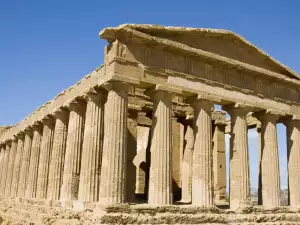Acropolis of Athens

One of the emblems of Greece is the Acropolis, which recalls the majesty of Ancient Greece. In itself it is a limestone hill, which rises majestically above the Greek capital Athens, about 150 meters above sea level. Undoubtedly, the most emblematic building here is the Parthenon, which is considered the most famous building in the world.
Indeed, the word, Acropolis means, upper town, as the territory of Greece is not uncommon. Acropolis of Athens dates back to the Mycenaean era, which is around 2 BC, and it is believed that it was a royal palace.

About 447 BC It began an era of "Golden Age" in the history of Athens . By order of the Pericles, the Acropolis had intensive developments and to build the entire complex the famous sculptor, Pheidias was responsible. Ten years later they began the monumental entrance to the Acropolis called, Propylaea of Mnesikles. On the right side of it rises the small Propylaea Ionic temple of Athena Nike, which was built between 421-415 BC.
Himself Parthenon is the temple of the goddess Athena, named Parthenos or in translation, virgin. During the Greco-Persian wars around 480 BC it was destroyed by the Persians. Its restoration was part of a grand plan of the Pericles to make Athens both a military and economic center but also the central hub of religion and art.

Around 13, 500 different marble blocks went in the building of Parthenon, which was built entirely in the Doric style. The outer colonnade was built of 46 columns, which hold 96 metope, painted with battle scenes. Also stood in the temple was an impressive golden statue of the goddess Athena. Marked by beauty and grace, it reaches 11 m in height and the sunlight falls through a fine marble roof on to the central figure. Today, however, neither roof nor statue has been reserved.















